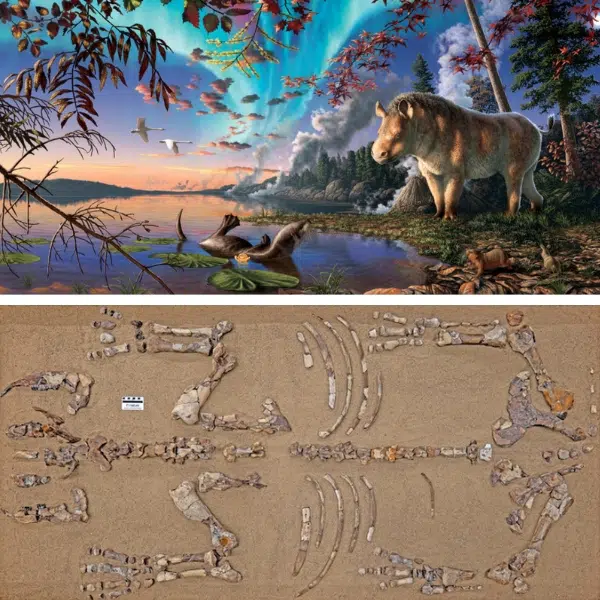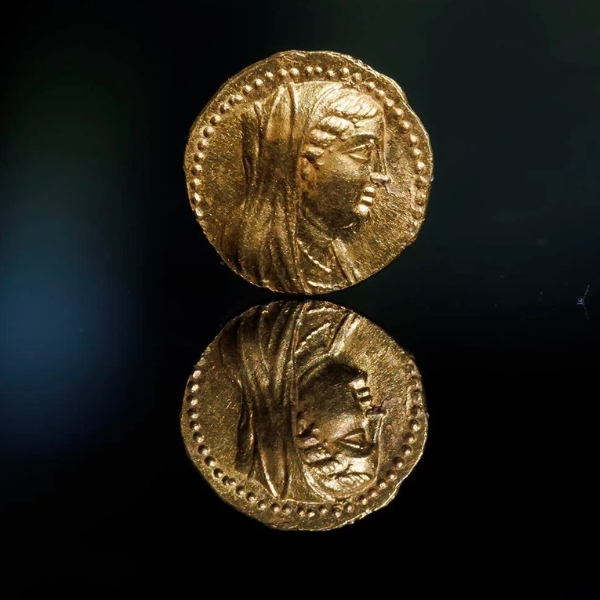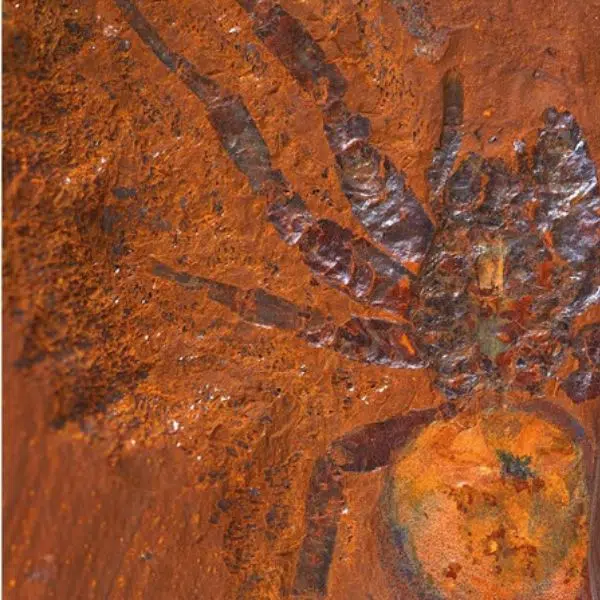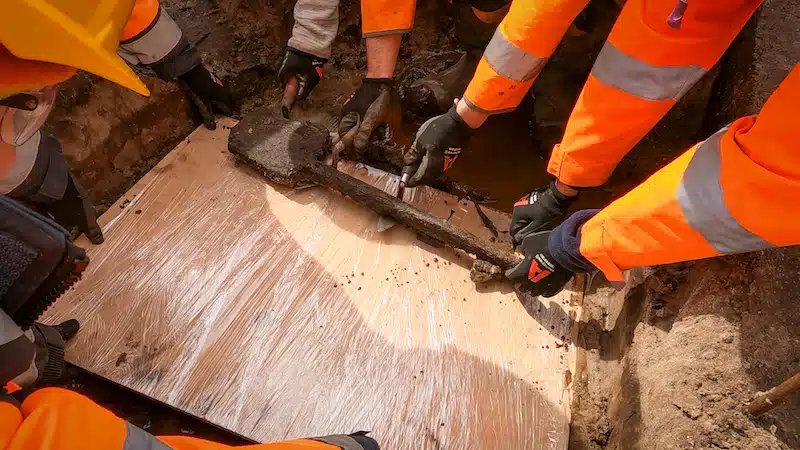
Archaeologists carefully life the fragile spade from the ground on to a board to be sent back to Wessex Archaeology’s laboratory for conservation © Wessex Archaeology
During recent excavations for The Moors at Arne project, Wessex Archaeology uncovered one of Britain’s oldest and most complete wooden tools—a rare discovery that sheds light on how Bronze Age communities interacted with the wetlands along England's southern coast.
Pottery and stone artifacts are relatively common finds during excavations, but intact wooden artifacts are much rarer since wood usually disintegrates over time. Fortunately, the waterlogged conditions at this particular site on the edge of Poole Harbour preserved the wooden spade, allowing it to survive for thousands of years.
“The moment the spade started to be uncovered the team on site knew it was a very special object and now we’re able to analyze it here in the laboratory, we’re starting to reveal its story,” says environmental archaeologist Edward Treasure, who led the analysis of the spade. “It’s made of oak and radiocarbon dating of the wood itself confirms it is c.3,500-3,400 years old, placing it firmly in the Middle Bronze Age. This is an incredibly exciting moment and we’re looking forward to finding out more as the process unfolds.”
During the Middle Bronze Age, the Arne Moors would have been prone to flooding in the winter months, and then drying out over summer. This led archaeologists to assume that people at the time didn’t live there, but were frequently visiting the area to make use of its rich natural resources.
The wooden spade was uncovered in a circular ditch that may have served multiple purposes, possibly as a resource hub for ancient communities. Wessex Archaeology reveals, “It could have been used as a place to cut and dry peat, as pasture for grazing animals or for hunting, fishing, gathering rushes for thatch and basket weaving and perhaps cultivating crops.”
It’s hard to imagine people ever spending time on the wild, nature-dominated Arne Moors. But this recent discovery shows that over 3,000 years ago, people were using and adapting to this challenging landscape to support their way of life. Greg Chuter, the environment agency archaeologist leading the program said, “The spade is a fascinating part of the story and as research continues, we're looking forward to exploring the relationship between the spade and the ditch, and what else they can tell us about life at Arne Moors 3,000 years ago.”
Check out images of the wooden spade below and find out more about the discovery on the Wessex Archaeology website.
During recent excavations for The Moors at Arne project, the Wessex Archaeology team uncovered a 3,500-year-old spade—one of Britain’s oldest and most complete wooden tools.
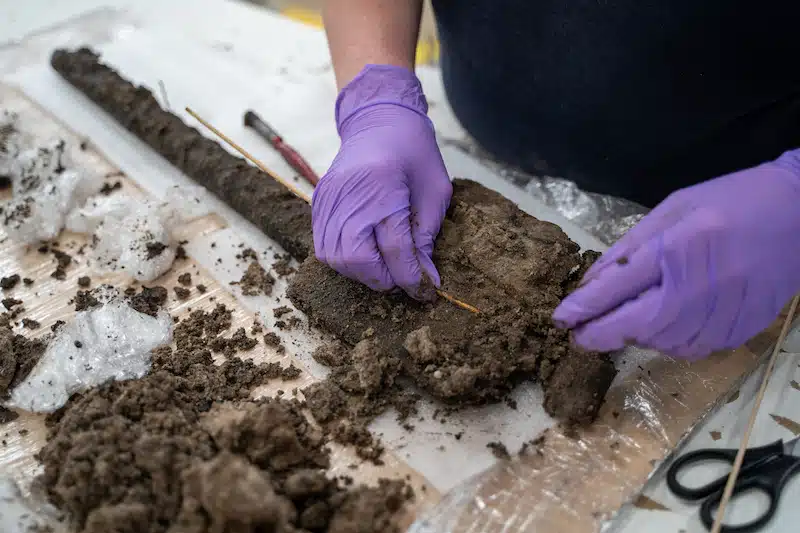
Experts from Wessex Archaeology carefully clean the spade of excess mud as part of the conservation process © Wessex Archaeology
The discovery offers rare insight into how Bronze Age communities used the wetlands along England's southern coast.
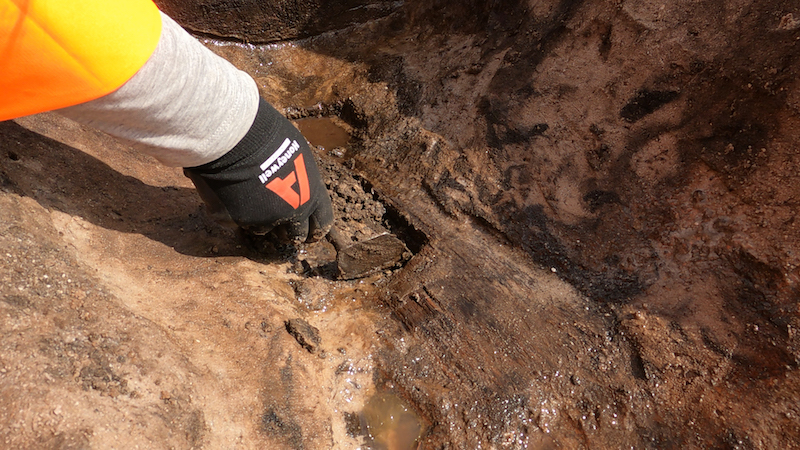
The wooden spade in situ, carefully excavated by Wessex Archaeology experts working on The Moors at Arne project © Wessex Archaeology
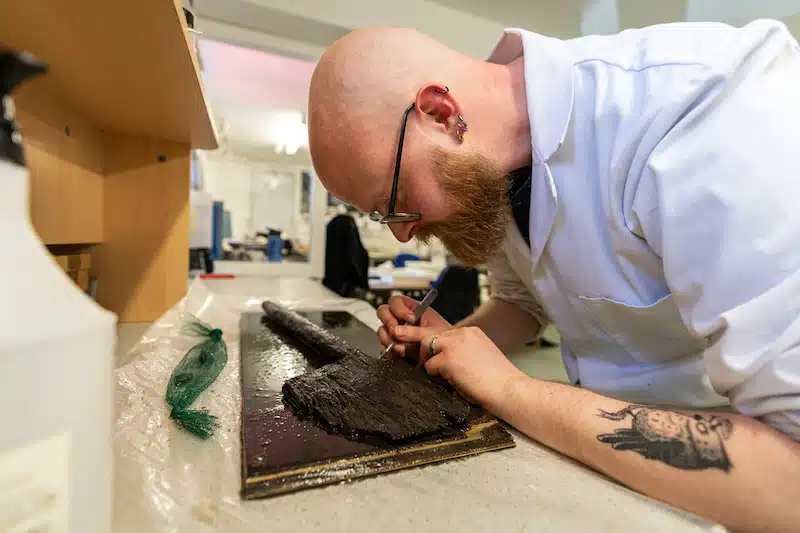
Samples taken from the wood by Wessex Archaeology Conservator, Thomas Wicks, will shine light on the condition of the spade and inform the next steps in the conservation process © Wessex Archaeology
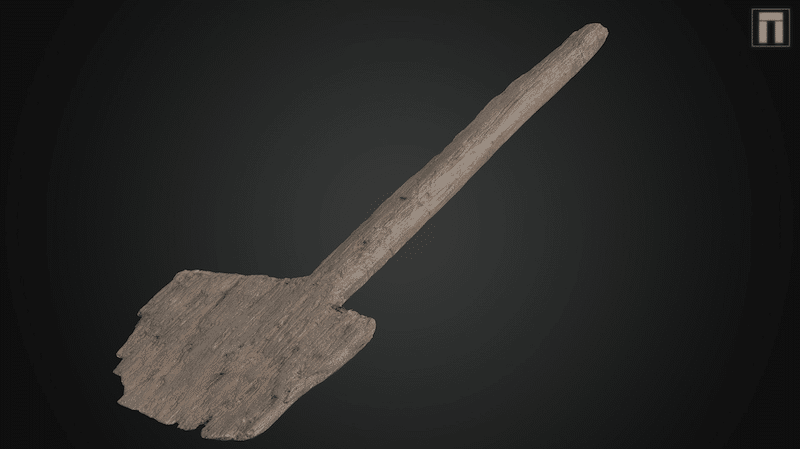
3D model of the prehistoric wooden spade discovered at The Moors at Arne © Wessex Archaeology
Find out more about the discovery and early analysis of the prehistoric spade.
Wessex Archaeology: Website | Facebook | Instagram | YouTube | TikTok | X
All images via Wessex Archaeology.
Related Articles:
Archaeologists Have Determined What Ancient Roman Wine Tasted Like
Team of 30 Archaeologists Spend 5 Years Uncovering Ancient Egyptian New Year’s Painting
Archaeologists Discover 2,000-Year-Old Roman Glass Bowl in Perfect Condition
Japanese Archaeologists Dig Up Jar Filled With Over 200,000 Bronze Coins











































































